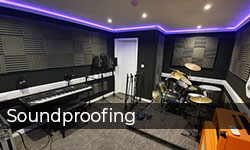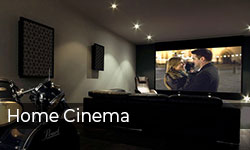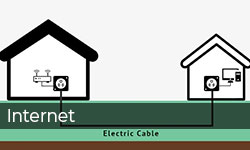
Soundproofing
Soundproofing
Garden buildings provide the ultimate value for money. They have substantially lower costs compared to house extensions, loft or garage conversions. Garden rooms can offer flexible spaces too with many being used for both a home office and family room.
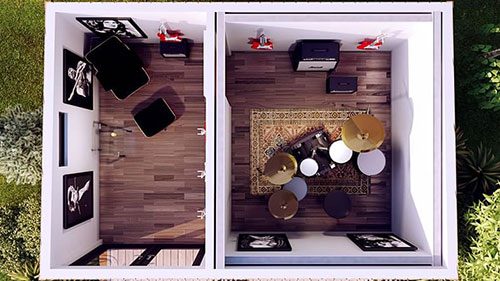
The Fundamental Physics
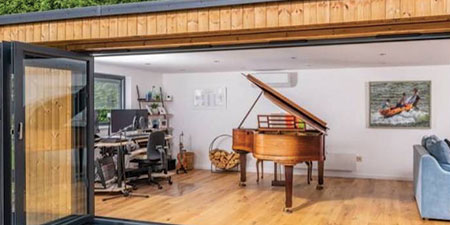
There are three important things to address when soundproofing for high decibel, potentially amplified music levels.
1. Airborne Sound (voices, music etc) is only blocked by mass. To block airborne sound, the structure of the building needs to contain a high level of mass. Mass is a complex thing to get into, but at the simplest level, the heavier and more dense a material is, the more mass it will have. i.e concrete has more mass than wood.
2. When sound hits a surface it becomes a vibration energy which can transfer through solid materials and surfaces very easily. Bass and kick drums will also create a lot of vibration energy. For a high standard of soundproofing, we need to absorb or decouple this vibration to stop it from transferring into the structure of the building. To do this we use the “Room Within A Room” technique. There will be more on this later.
3. Soundproofing is like waterproofing – To contain the sound within the studio, you will need to soundproof all the walls, ceiling and floor. All weaknesses such as windows, doors and air vents need to be considered, and any air gaps need to be sealed, as sound will always find the weak point and still get through.
Why are insulated walls not enough to stop sound transfer in a garden studio?
In most buildings, walls and floors have an interior support structure of wood, steel studs or joists. These are covered with some form of rigid sheeting like plasterboard or particle board flooring, leaving an air space between the walls, floors and ceilings. This air space allows for the easy transfer of sound waves with very little solid mass for the sound to vibrate through or slow its transfer.
One of the most common methods used to reduce the transfer of this sound is to insulate the wall, floor or ceiling with one of several types of insulation. However, although this technique may reduce the transfer of sound vibrations through the air space, it does nothing to stop the sound transferred through studs, plasterboards, joists or flooring.
Additionally, with the conventional method of insulation, it’s also important to understand that all sound frequencies are not the same. Therefore some low frequency sounds may not be stopped by insulation and equally, some high frequency sounds may not be reduced significantly. Consequently, insulating the air space in a building is only effective in deadening mid-range frequency sound.
Many people have found this out to their cost by having sound deadening insulation installed only to find that the bass beats come through almost unaffected, as if no insulation was present. High pitched sounds also often travel through uninterrupted.
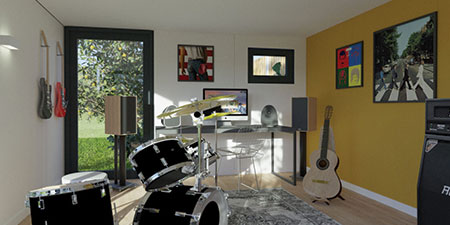
So how is sound transferred in an insulated wall?
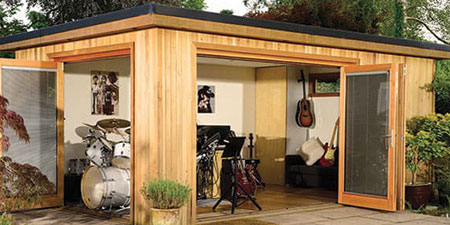
When plasterboard is nailed directly to wall studs; sound waves vibrate the internal plasterboard, this is then transferred to the stud and consequently transferred to the external plasterboard (on the other side of the wall). These vibrations transfer to the air in the external room and become sound waves again. The industry term for this is coupling and, unsurprisingly, the solution to this is called de-coupling.
What is de-coupling?
De-coupling creates a space between the drywall and studs. This greatly reduces the vibration and resulting transfer of sound. This solution can be achieved during construction by placing a resilient rubber cushion between the plasterboard and studs to absorb the vibrations.
Alternatively, another (and arguably more effective) method is to install a cushioning sheet over the stud wall and under the drywall, or over floor joists and under sub-flooring. When combined with insulating the air space between walls and floors, de-coupling will result in a significant reduction in the transfer of high, low and mid-range sound frequencies.
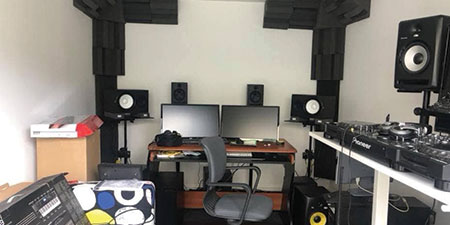
Can you enhance this sound protection even further?
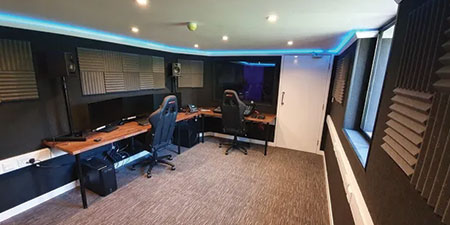
Yes! When used together, each of these standard methods can go a long way in controlling the transfer of unwanted sound. However, You can also fit windows with sound isolating shutters (to both leafs), apply acoustic triple glazing and use noise lock doors. When combined, the effect of all these solutions is tremendous.
Interesting facts about sound
The human ear can detect a wide range of sound pressure levels. Sounds can be very soft, such as the ticking of a wristwatch, or very loud, such as a top fuel dragster doing a burnout. The intensity of sound pressure can be measured, and is expressed as decibels, or dB.
Alexander Graham Bell founded the concept of decibels and formulated a logarithmic scale based on 10. “Deci” refers to the base 10 log scale, and “bell” refers to Alexander Bell.
Each 10-dB increase represents a tenfold increase in sound intensity. In addition, a 10-dB increase is perceived as roughly doubling loudness.
All sounds consist of waves of pressure moving through the air. As decibels increase, these waves of pressure get stronger and have more physical force.
The human body reacts to this physical force through HEARING and FEELING the bombardment of sounds.
When sudden, strong sounds reach the ear, and are transmitted to the brain, the body reacts by triggering the autonomic nervous system. This automatic system is in place to protect us against danger. This system produces the “fight or flight” adrenaline response, which prepares the body to either fight a danger, or flee from danger.
In addition, when intense sound waves are combined with excessive low-frequency vibrations, the effect is tremendously damaging to the body, as well as to physical structures, such as buildings, etc.
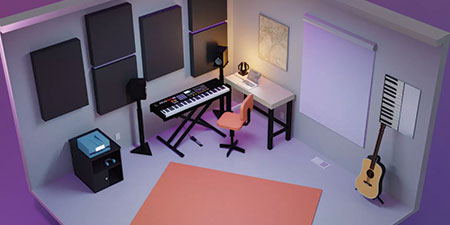
A Few Examples Of Decibel Readings
Loud Noise Dangers
Volume
Description
Volume
Description
1 – 25 dB
Human ear begins to detect sounds at this baseline
> 70 dB
Increases the risk of heart attack by 20%
40 – 50 dB
Sound levels in the average home
> 90 dB
As this intense sound bombards the body, the adrenaline reaction is so powerful that people become openly hostile and belligerent
60 dB
Normal conversation
120 dB
Standing behind a Boeing 707 while it is in full thrust, just before takeoff. Hearing loss can occur after just 7.5 minutes
70 dB
Negative responses begin in the body. The autonomic nervous system kicks in.
120-130 dB
Sound threshold for pain







